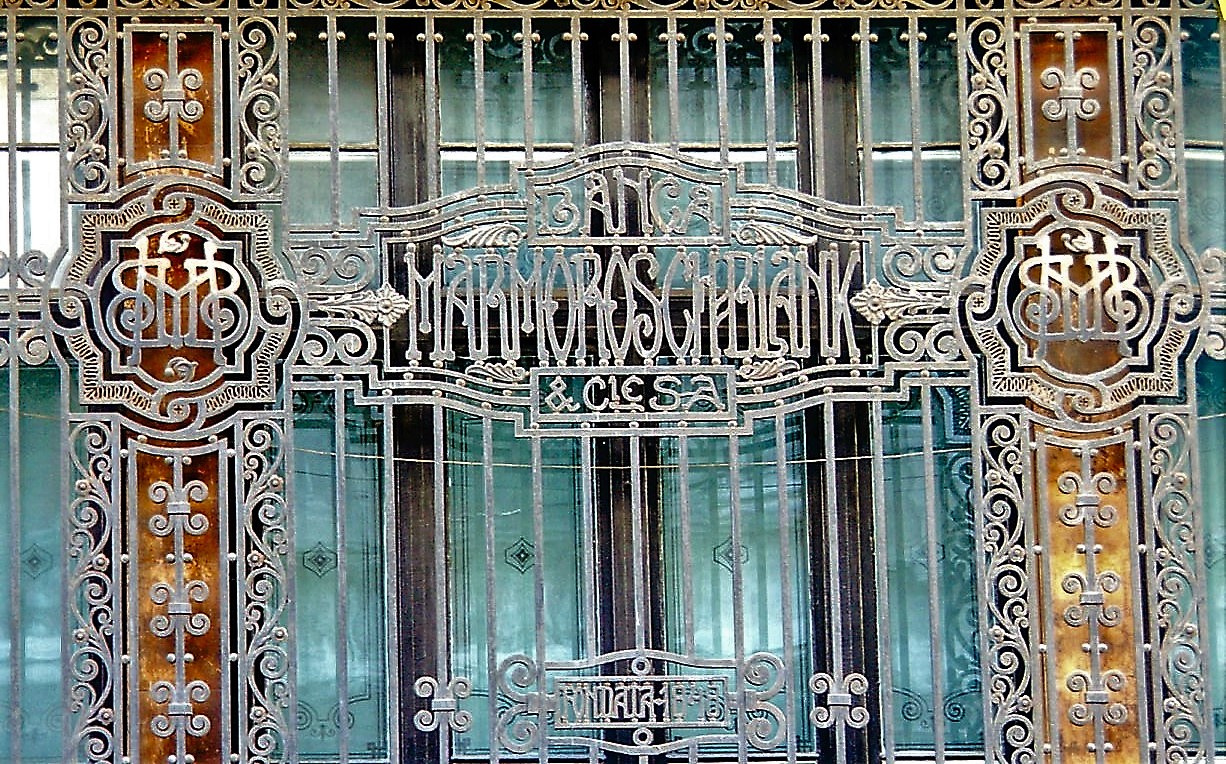
During the second half of the 19th century, due to the accelerated modernization in Romanian society, reflected in various areas such as urbanization, growth of new economic branches, industryand credit institutions; thetypes of occupations Romanian Jews were involved in - changed.
Jews were active as entrepreneurs in all industries and several of them were considered to be breakthroughs. Most often they developed an industry in fields they had previously worked in as craftsmen or laborers, so the most prominent manifestation of progress at that time was the transition from workshop to factory.
One of the more significant aspects of Romania's modernization process at the time was the effort invested in setting up new industry. The initiative of the Jews was integrated into the process, and by the early 20th century there were 625 various industrial plants in Romania, of which 146 (about 23 percent) were Jewish-owned.
Jews were particularly prominent in the textile industry, due to the tradition of Jews being professional tailors. For example, in the 'Postav' fabric (a type of tarpaulin) industry, 8 out of 14 factories were owned byJewsand 57 % of all hat makers were Jews. The Nacht Brothers opened a shirt factory in Iași, which in 1890 employed 150 workers.
In the metal industry, out of a total of 26 companies, 9 were owned and operated byJews. Within this group, there were several factories which stood out in areas related to agriculture, during a period which had undergone changes due to agrarian reforms.
One of the characteristics defining Romania during the second half of the 19th century was the modernization of its cities in the style of Western Europe, and Jews played an important role in this building growth. In this period, public lighting was installed, public gardens were set up and boulevards were built, and these projects were handed over to private contractors, many of whom were Jewish. It is interesting to note that the number of Jewish gardeners was particularly large, and in the early 20th century there were 1,896 Jewish gardeners in Bucharest, twice the number of Romanian gardeners in the city. Jewish gardeners also operated in Iași, although in smaller numbers.
Construction fever at that time led to the accelerated development of factories producing construction materials. Jews also were involved in the new cement industry; in Comarnic, Ernest Manuil opened a cement and lime factory in 1887, and in Bucharest, Maurice Blank& G. Cantacuzino established a cement factory. There were 54 factories which operated in lumber processing, of which 21 were owned by Jews, an industry controlled by the Iuster family in Moldova. Jews also engaged in lime production and brick making; where the first brick-making factory in Bacău was built by Ventzel Zingher.
Many Jews chose professions such as building carpentry and flooring. In 1864, when the Ministry of Education issued a furniture-making tender for bids for the National Library in Bucharest, all of the bidders were Jewish. Iosef Vilman won, and the sketches he created preserved to this day. Jews constituted a high percentage among floorers as well, and by the end of the 19th century, about 50% of all floorers were Jewish.
Iron products, mainly furniture and other items necessary for urban municipalities, such as benches, lanterns, andkiosks, were popular commodities at the time, and four of the six factories in this industry were Jewish-owned. These factories played an important role in the changing-face of Romanian cities towards a modern European style. To this day you can see benches, streetlight poles, and planters made out of iron which bear the seal of Leon Abramovici's factory in Bucharest, especially in Cişmigiu Park.
72 out of the 328 chemical plants were owned by Jewish entrepreneurs, and 26 of the 56 soap-producing plants had Jewish owners. Of the important soap factories, there were three in Galați: Cazelman's "Fabrica de stearănărie si săpunarie" founded in 1861, the "Apollo" established in 1882, and I. Mosner's factory, built in 1890.
Oil production was another area in which many Jewish entrepreneurs took part. In 1900, 70 oil refineries operated in Romania, 26 of whichwere Jewish-owned. Jews also were involved in oil drilling projects that were conducted in the area of Bacău. As early as 1860, Sheffler began drilling in the Valea Arinilor oil fields, and two years later the Greenberg brothers joined him. From 1888 to 1896, seven Jewish-owned drilling sites operated in this area and other Jewish oil entrepreneurs were active in the Prahova area, including M. Predingerand M. Lazarovici.
The most developed industry was the food industry in which manyJews worked. One-third of all businesses involved in the milling of grains had Jewish owners. They also pioneered in the production of carbonated water; I. Reicher established a carbonated drink sand soda factory in Bucharest in 1893, and H. Freier set up a similar factory in Focşani in 1894. Another pioneering industry was canning, in which 5 out of 11 factories belonged to Jews, including Max Fischer of Galați and Moşe Band from Iaşi.
Jews integrated into industry not only as entrepreneurs, but as workers as well, and by the end of the 19th century they constituted 17% of all workers, and about 20% of all apprentices. In some districts, Jewish workers constituted the majority: in Iaşi - 63%, in Botoşani - 58%, and in Dorohoi- 53%. In the early 20th century, these numbers rose further, and within the tiny industry a layer of Jewish proletariat was created.
The integration of the Jews in the development of credit institutions in Romania, which contributed greatly to economic development, was based on a traditional occupation amongJ ews - the lending of money with interest. By the end of the 19th century, the number of Jews giving loans continued to rise, including bankers who had established successful banks such as Marmorosch-Blank Bank, The Bank of Moldova andtheCommercial Bank of Craiova.